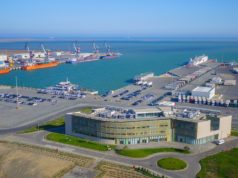The EU’s gas market is now oversupplied and exporting Iranian gas to this market is not profitable now either through a pipeline or as LNG, Deputy Oil Minister for International Affairs and Commerce Amir Hossein Zamaninia told Trend May 24.
According to him, regional markets are in Iran’s focus currently.
“We should sell gas to global markets, but at this time Iran is not in this situation yet,” said Zamaninia. “As holder of the world’s largest gas reserves, Iran needs to develop gas production projects further.”
“Recently, Iran and Azerbaijan’s SOCAR have agreed on cooperation in development of Iran’s upstream sector. Dozens of foreign companies have been qualified to enter Iran’s upstream sector,” he added.
Twenty-nine foreign companies have been qualified by NIOC to take part in Iran’s upstream oil and gas projects and the list is to be expanded.
He added that currently Iran can and is working on exporting gas to neighbour states, but there is little gas for exporting to far markets and this is not profitable via pipelines through Azerbaijan, Turkey or other routes.
“Economically it is not viable. We plan to involve in European and other markets and export gas through pipeline or as LNG in future.”
According to Iran’s five-year national plan, it should increase the gas export to 60 billion cubic meters per year (bcm/yr) by 2022. Currently, Iran has agreements with Iraq and Oman to supply 28 bcm/yr of gas to these countries.
Iran’s gross gas output reached 285 bcm last fiscal year (ended March 20), but it plans to increase this volume to above 400 bcm/yr by 2022.
Zamaninia said that currently the EU markets are oversupplied with gas and the gas price is low, and it is not profitable for Iran to enter these markets in short term.
EC: Iran could be important contributor to European gas supply diversification efforts
Charles Ellinas, CEO of the Cyprus-based energy consultancy e-CNHC, told Trend May 23 that gas prices in Europe are too low to make gas export prospects for Iran commercially viable.
Ellinas, who is also a non-resident senior fellow with the Atlantic Council and has over 35 years of experience in the oil and gas sector, added that right now gas prices in Europe are under $5/British Thermal Unit (mmBTU) and are forecast to remain in the range between of $5/mmBTU and $6/mmBTU in the long term.
Meanwhile, the price of Iranian gas supplied to Turkey was $5.8/mmBTU in 2016, Ellinas said.
“At such price by the time it reaches Europe it will be over $7/mmBTU, which would be too high to attract buyers,” the analyst said.
Iran should firstly construct a 1,800-km pipeline (Igat9) with 17 compressors and raise at least $6-8 billion worth of investment to connect the South Pars field to its north-western regions to be able to export gas to the EU through the Southern Gas Corridor, or a new pipeline.
Coming to exporting LNG, Iran has an LNG project, half done, with 10.4 million tons per year capacity, but it needs at least $6-9 billion of investment to become operational.
Gas consumption in the EU increased by 7 percent in 2016 compared with the previous year to 447 bcm, of which a third was supplied by Russian giant Gazprom.






